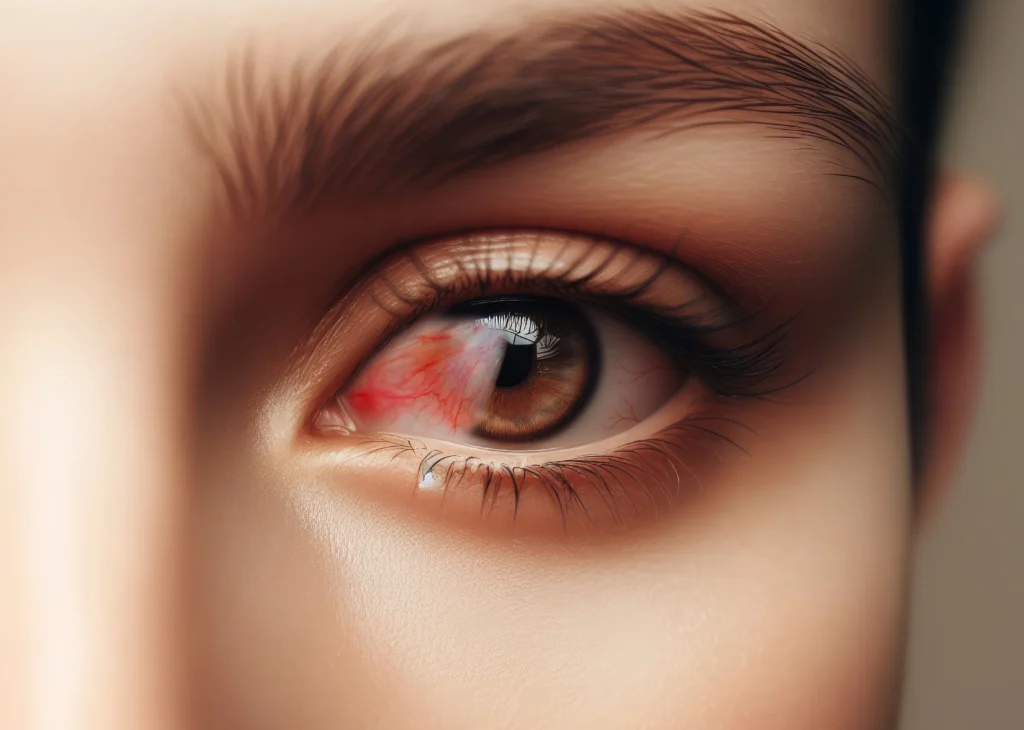
Introduction
What is Dacryocystitis?
Dacryocystitis Cause & Symptoms
- Bacterial Infections: Infections caused by organisms such as Staphylococcus aureus or Streptococcus species can lead to dacryocystitis.
- Congenital Blockage: Infants may be born with a blocked nasolacrimal duct, which can result in dacryocystitis if not managed properly.
- Trauma: Injury to the eye or surrounding areas can cause inflammation and blockage of the tear drainage system.
- Chronic Conditions: Conditions like chronic sinusitis or nasal polyps can contribute to obstruction and subsequent infection.
- Age-Related Factors: In older adults, age-related changes can cause partial obstruction of the duct, increasing the risk of infection.
- Membrane: A membrane blocking the duct in newborns can lead to dacryocystitis.
- Tumours: Tumours in or around the nasolacrimal duct can obstruct tear drainage and lead to infection.
- Pain and Tenderness: Pain and tenderness near the inner corner of the eye.
- Swelling: Redness and swelling of the area around the lacrimal sac.
- Discharge: Pus or mucus draining from the eye, which may be yellow or green.
- Fever: Systemic symptoms such as fever may occur in more severe cases.
- Tearing: Excessive tearing or watery eyes due to the blocked tear duct.
- Clinical Examination: A thorough examination by an eye care professional to assess symptoms and the extent of swelling or tenderness.
- Imaging Studies: In some cases, imaging studies like dacryocystography (X-ray of the tear duct system) or ultrasound may be used to visualize the obstruction or infection.
- Cultures: Samples of discharge or pus may be taken to identify the causative bacteria and determine appropriate antibiotic treatment.
Dacryocystitis Treatment Surgery
Oral or Intravenous Antibiotics
Warm Compresses and Massages
Lacrimal Duct Probing
Antibiotic Eye Ointments and Drops
Surgery for Chronic Cases - Dacryocystorhinostomy (DCR)
Restore Your Vision Today : Expert Care at SVEI
Epiphora

Introduction
What is Epiphora?
Epiphora in children
-
Blocked Tear Ducts
Obstruction or narrowing of the tear ducts can prevent tears from draining properly. This can be caused by infections, inflammation, or anatomical abnormalities.
-
Dry Eye Syndrome
Ironically, dry eyes can lead to epiphora. When the eyes are dry or irritated, they may produce excessive tears as a response, which can then overflow.
-
Allergies
Allergic reactions can cause increased tear production, leading to watery eyes. Common allergens include pollen, dust, and pet dander.
-
Conjunctivitis
Infections or inflammation of the conjunctiva (the lining of the eye and eyelids) can result in increased tear production and epiphora.
-
Vitamin A Deficiency
Issues such as eyelid inflammation (blepharitis) or eyelid malposition (e.g., ectropion or entropion) can affect tear distribution and drainage.
-
Vitamin A Deficiency
Presence of foreign bodies or debris in the eye can cause irritation and excessive tearing.
-
Age-Related Changes
As people age, the tear drainage system can become less efficient, leading to epiphora.
Probing for congenital nasolacrimal duct obstruction

Dacryocystocele

